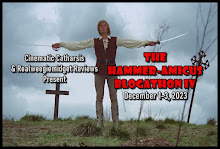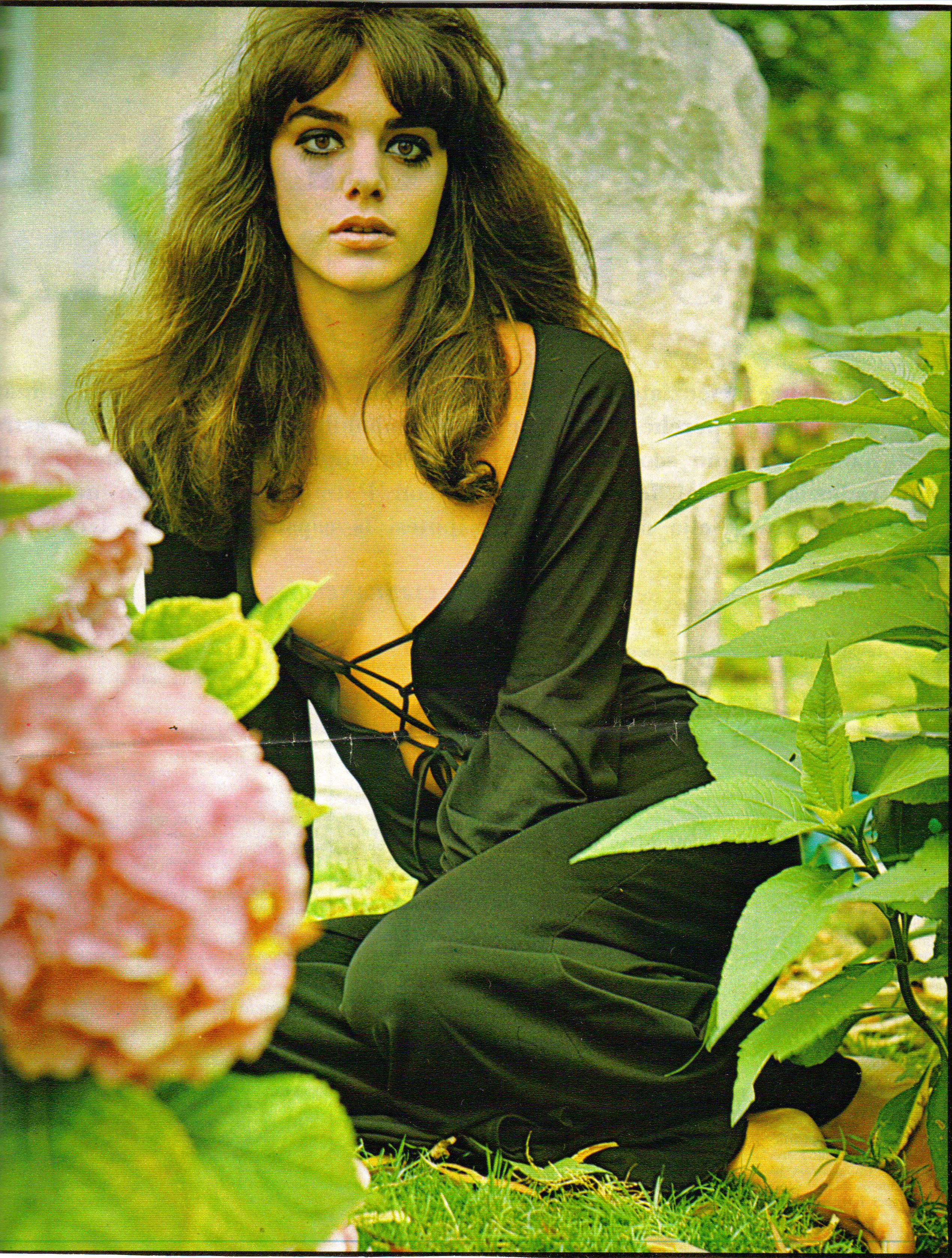Given that Hammer’s official YouTube channel has made some of their lesser known and previously only difficult to get a hold off early black & white productions more readily available, it is pretty pathetic that I haven’t spent a few sleepless nights yet in front of the screen in my endeavor to plug a few more of my holes in my Hammer filmography.
Time to change this…..
(Spoiler Alert: Please continue reading only after watching the film first.)
FOUR SIDED TRIANGLE was Terence Fisher’s first Sci Fi movie and some of its concepts indeed seem to predate some of their later Frankenstein flicks (e.g. CREATED WOMAN).
In a pastoral English village, Robin (John Van Eyssen who is better known as (HORROR OF) DRACULA’S Jonathan Harker) and Bill (Stephen Murray), two friends since childhood, are collaborating together to create what was apparently going to become a prototype for Star Trek’s replicator. They are assisted by Lena (Barbara Payton), a childhood sweetheart who has just returned back from a stint in the States, and makes up the third (and later on also forth) side of their triangle.
Payton’s character is potentially the most interesting one in this movie as she is so decidedly off-centre, yet the film seems to treat most of her later decisions with the utmost normality.
We first see her in a flashback playing knights and lady with the boys and clearly already favouring Robin. Following a lengthy stay in the States she meets up with Dr Harvey (James Hayter), the narrator of this film, and proudly proclaims that she intends to spend all her money and subsequently “die in some reasonably unmessy fashion”.
This is quite possibly one of the most casual suicide declarations ever filmed and even more shocking as we never seem to get a proper idea why she considers herself such a failure and disappointed with life. What a way to get introduced to a character!
Meeting her old friends again, however, seems to give her a fresh purpose in life and she acts as their assistant and quickly rekindles her mutual infatuation with Robin, leaving Bill just longing after her.
Most of the research work is depicted as taking place in a laboratory that could easily have also been used in both the Universal or Hammer Frankenstein productions. Where at first the goal was to replicate inanimate objects, duplicating life is the obvious next step, especially given that Bill comes up with a plan to copy Lena giving him at last a chance for some quality time with her artificial twin but leading the viewer with a few more choice head-scratch moments with regards to her dubious decision making skills.
Not only does she readily agree to volunteer without batting an eyelid for this untested replication process. Her artificial twin (called Helen) is a carbon copy even down to her emotions for Robin yet out of some misdirected sense for – yes, for what exactly? it is never clear - , she decides to marry Bill, only to attempt to drown herself. To make things even worse, she subsequently believes that getting her memory wiped just so she can forget about her real true love is indeed a good idea (“an empty mind and a new beginning”).
And never during any of this do we get a feeling that this is anything else but common sense decision making! Any single one of those decisions is actually beyond creepy so not emphasizing that creep factor in the movie and making all those actions appear downright normal is in the end an awfully wasted opportunity and a missed chance.
This could have become a proto-Cronenbergian Mind Fuck but just ends up being a very average and mercifully short production based on a preposterous idea. Even a potentially disturbing surprise ending is solved amicably, unlike the literary original that appears to have gone just this extra bit further with regards to the final outcome.
William F. Temple’s original story was adapted to the screen in collaboration by both Terence Fisher and Paul Tabori, a Hungarian author who on top of writing some English language pulp fiction novels wrote a number of screenplays as well and was also involved with Terence Fisher’s next film, SPACEWAYS, yet another early Science Fiction movie by Hammer.
Whereas most of the talent in this film was just at the beginning of their careers, sadly 26-year-old Barbara Payton was already approaching the end of hers.
Once an up and coming potential Hollywood Star she was a true-life Femme Fatale and after having made the rounds through a number of her leading men and nearly being responsible for the death of one of them following a vicious brawl over her, she was deemed toxic in Hollywood and reduced to shooting the likes of BRIDE OF THE GORILLA.
Going to Bray was meant to be a new start for her. FOUR SIDED TRIANGLE was filmed from August – September 1952 and shooting on her second Hammer film BAD BLONDE/THE FLANAGAN BOY started right afterwards on September 25.
Alas, there was little else to come for her careerwise. She fell into a vicious spiral of alcoholism, drug abuse and homelessness, was at one stage reduced to sleeping on park benches and ended up selling her body. She died much too young at the age of just 39 as a result of heart and liver failure.
Though it’s easy to blame the Hollywood system for her downfall, it must also be said that there are ample examples of normal folks out there pressing the self-destruct button out of their own volition.
A cover story in CONFIDENTIAL magazine published an exposé: “How I went from a $10.000 a week movie queen to a $5 party girl!”
In her memoirs I AM NOT ASHAMED she wrote choice nuggets such as:
"I went out with every big male star in town. They wanted my body and I needed their names for success. There was my picture on the front pages of every paper in the country... Today I live in a rat infested apartment with not a bean to my name and I drink too much Rose wine. I don't like what the scale tells me. The little money I do accumulate to pay the rent comes from old residuals, poetry and favors to men. I love the Negro race and I will accept money only from Negroes. Does it all sound depressing to you? Queasy? Well, I'm not ashamed."
Having long been out of print and commanding high prices, the book was re-published a few years back (and is still available cheaply for the Kindle) as well as a biography about her, KISS TOMORROW GOODBYE, named after one of her films. I hope to review these books a bit more extensively in the near future but you know me: I may also just vanish again for a while from the blogosphere.
In the meantime: Do check out the movie. After all it comes free courtesy of Hammer’s YouTube channel. It may just be an average production overall but with the Frankensteinian vibes and some off-beat moments courtesy of one of Tinseltown’s most miserable real life stories, this is worth a quick glance.






























